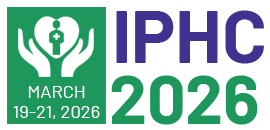Title : Role of remote glucose monitoring device and community health worker in uninsured hispanic population in United States
Abstract:
Introduction: Hispanic population in the United States of America who are ineligible for government health coverage, have one of the highest rates of diabetes. Lack of insurance predisposes them to poor screening and lack of treatment that could lead to complications. A grant allowed a 6-month remote monitoring program with cellular data transmission to a central web-based data aggregation site (held by a company called Ejenta). We did a retrospective review of the role of a remote glucose monitoring program in the uninsured Hispanic population seen in a free clinic in Little Rock, AR, USA.
Methods: We did a chart review of consecutive patients with diabetes seen at the free clinic who had received the remote monitoring device (RMD) and had both pre- and post-lab values (Hb1Ac and or Blood glucose) The RMD was obtained from a grant and a community health worker who was bilingual was involved in follow up of these patients after the delivery of the device to reinforce compliance. After the completion of the cellular data aggregation component, the patients were allowed to keep the devices. Lab values such as HbA1c and blood glucose were collected both pre and post device delivery. A Pearson’s correlation coefficient was used to calculate the relation between the HBA1C improvement and duration of device use.
Results: 55 patients were identified as having diabetes and who had HbA1c checked both pre and post device delivery. 53 were on oral hypoglycemic agents and 21 were on both oral hypoglycemics and insulin therapy. The prevalence of concurrent DM, hyperlipemia (HLN) and hypertension (HTN), DM+HLN and DM+HTN were 27 (49%), 46 (84%) and 45 ( 82%) respectively. Only 5 patients had DM alone. The median time for A1c measurement pre and post device delivery were 69 and 66 days respectively. The Pearson’s coefficient for the relation between the HBA1C improvement and duration of device use was weakly positive with r= 0.30 with a P=0.02.
Conclusion: There seems to be a weak correlation for the duration of the device use to the improvement in HbA1c and we plan to have updated data with more follow up time and health worker intervention for the final poster. We also plan to analyze the social determinants of glucose monitoring and treatment with the community health worker intervention in this minority population.
Audience Take Away Notes:
- Utility of remote monitoring program for diabetes in minority population.
- Utility of community health worker with bilingual capabilities to help with compliance to monitoring and treatment.
- Social determinants of diabetes monitoring and treatment.
- Practical solutions in diabetes monitoring in minority population.



